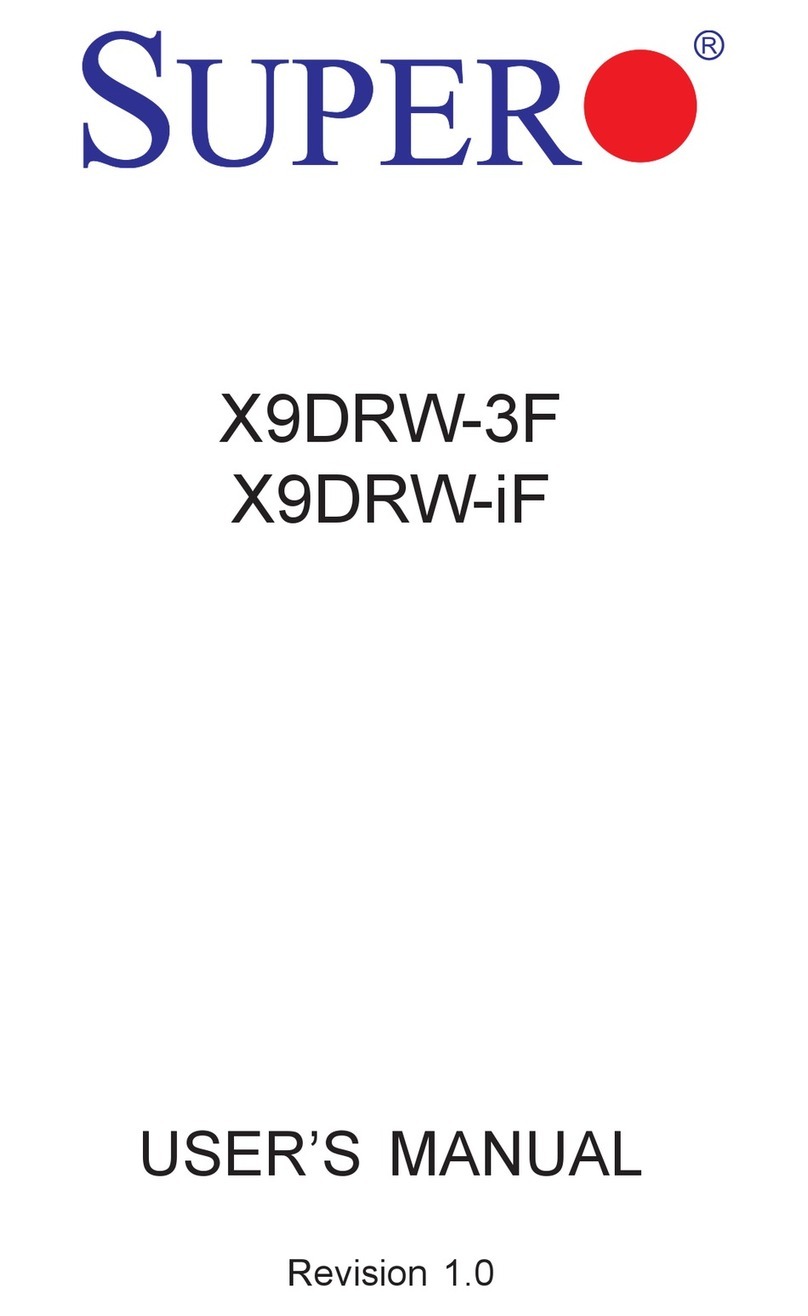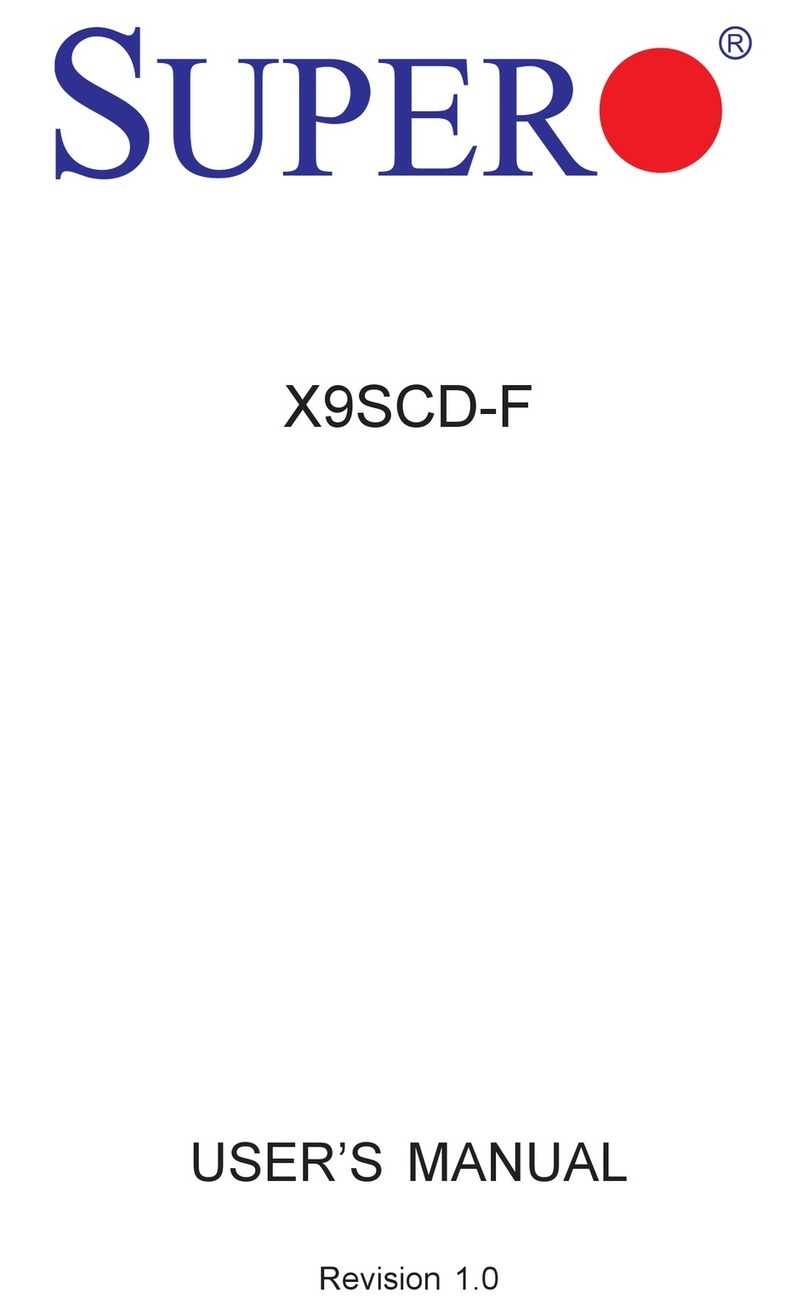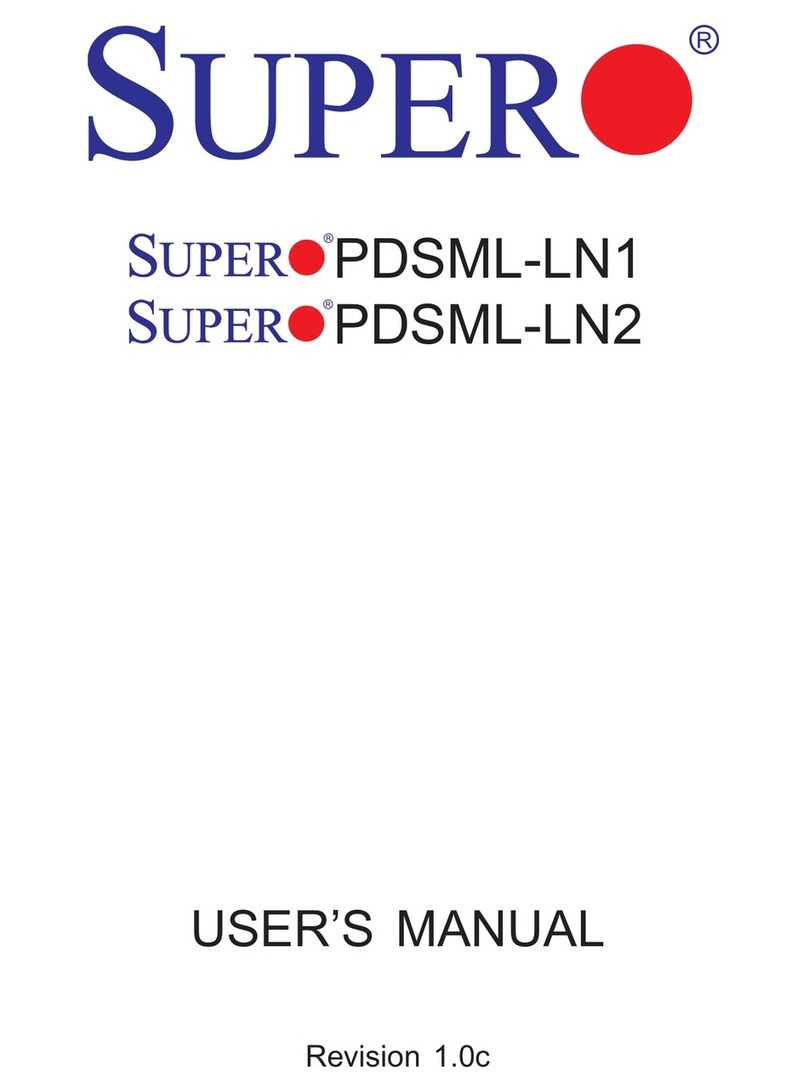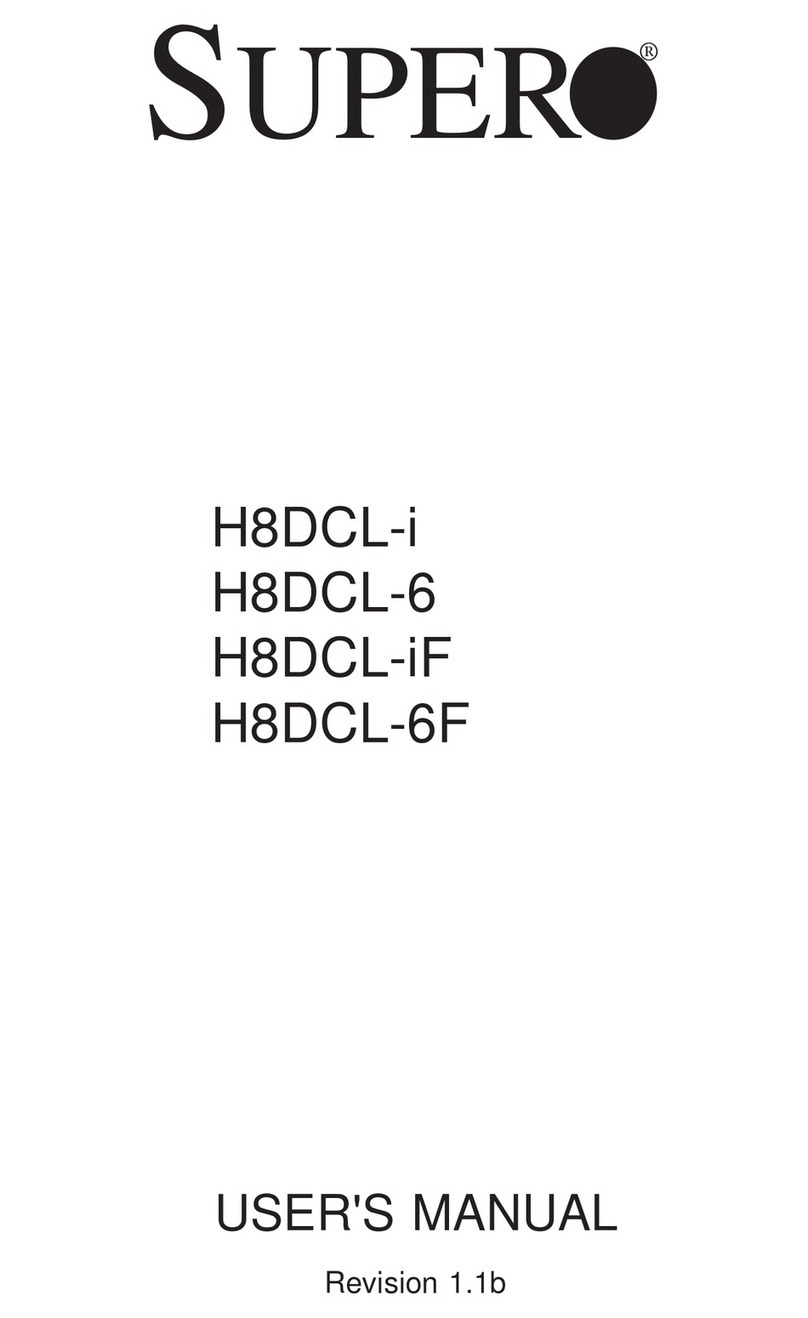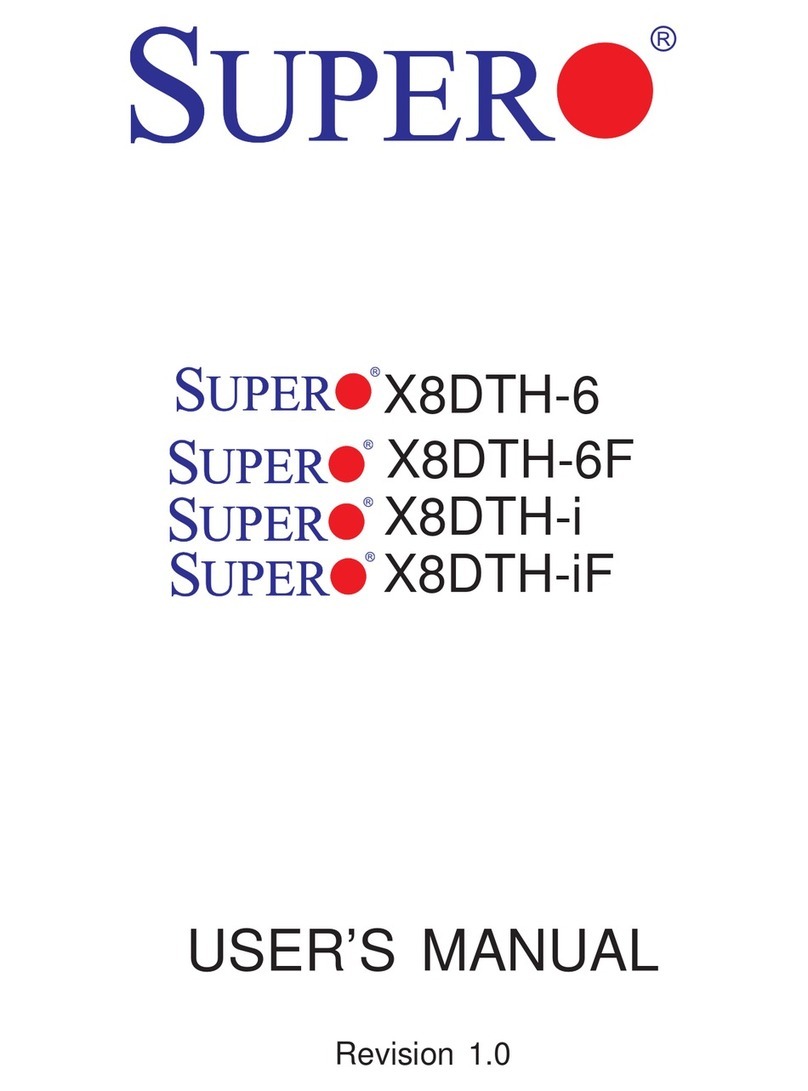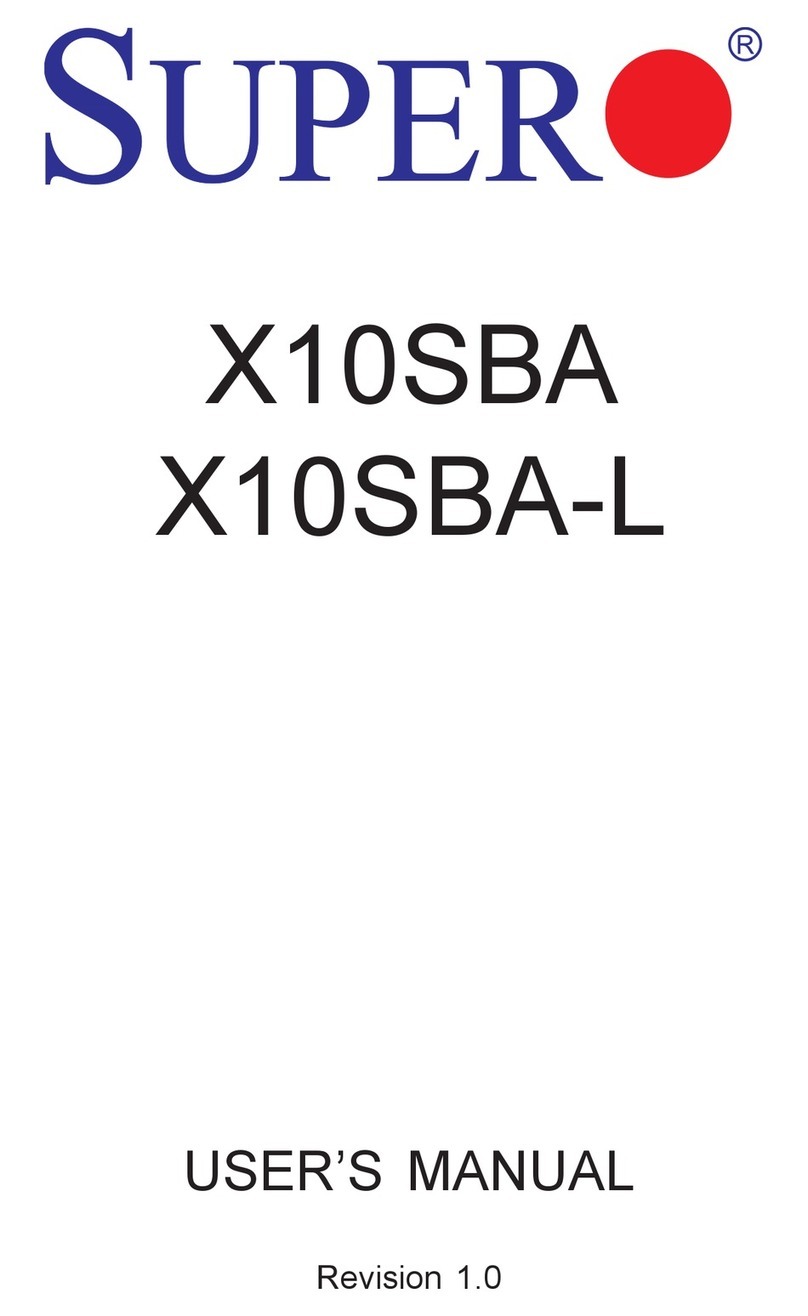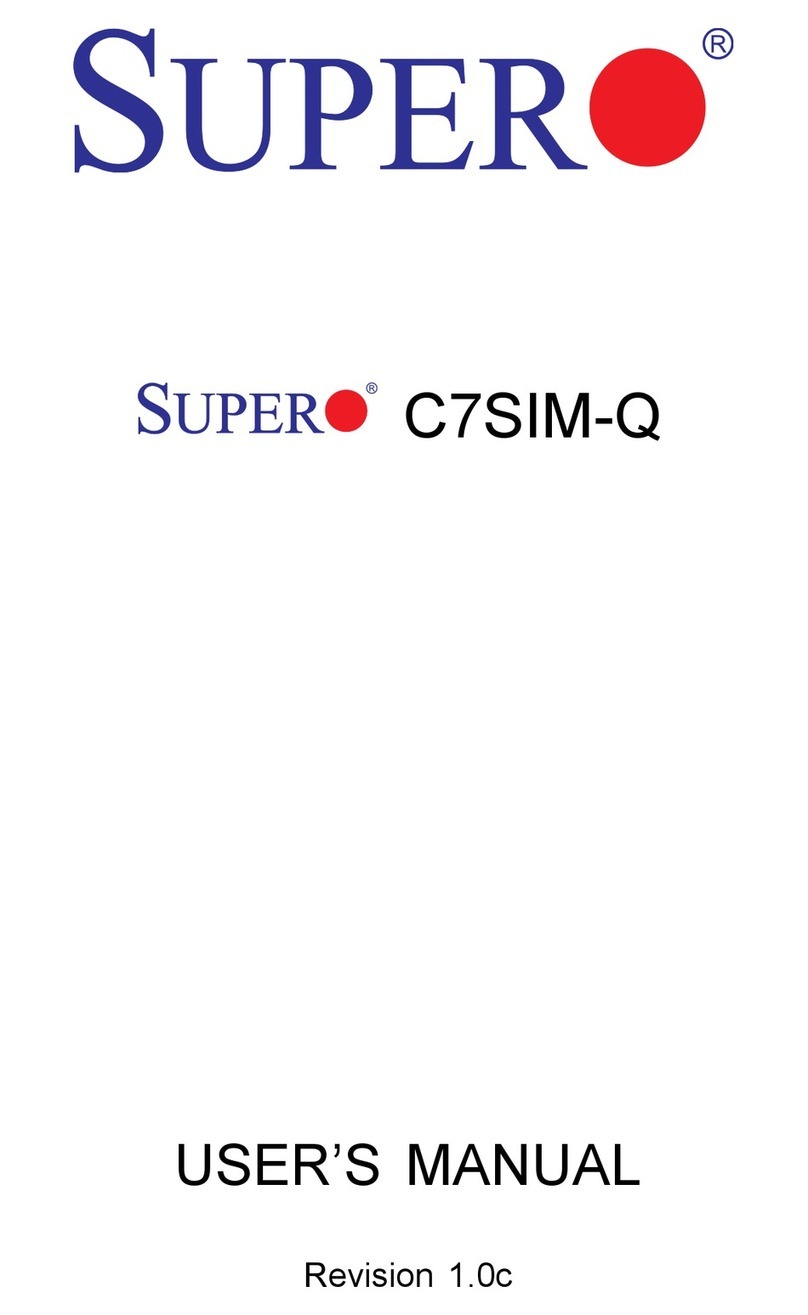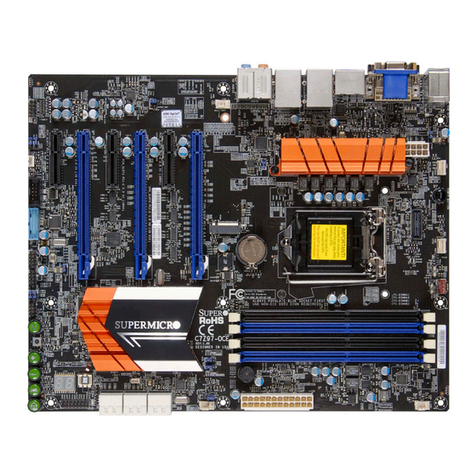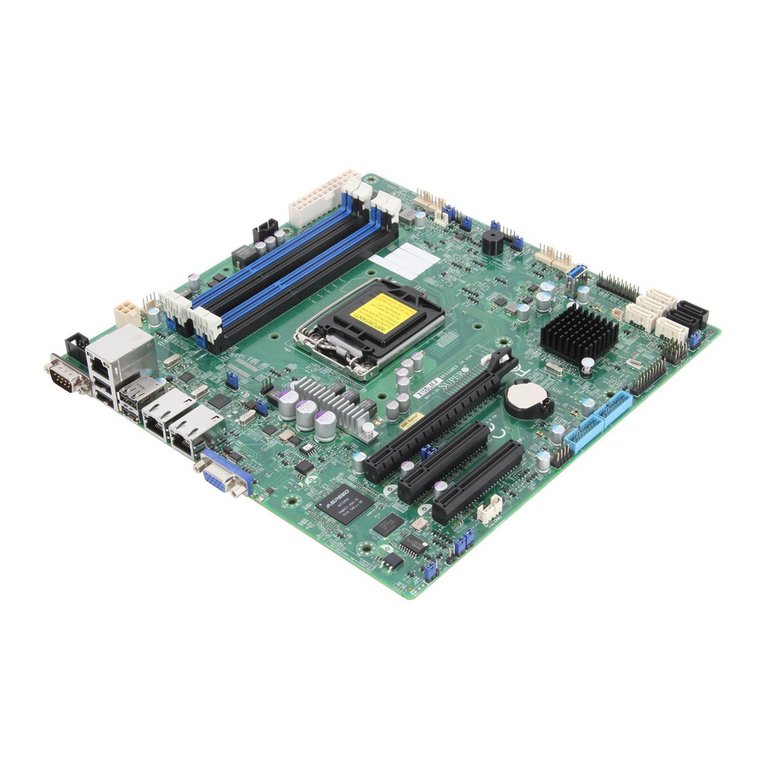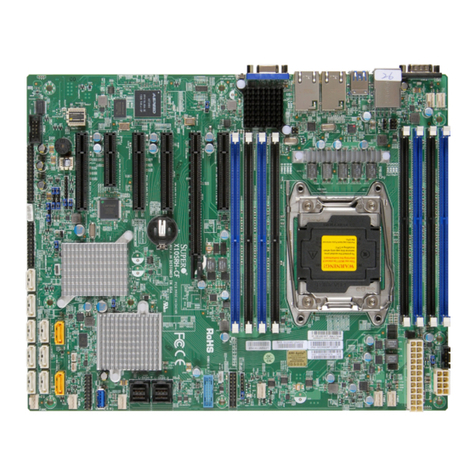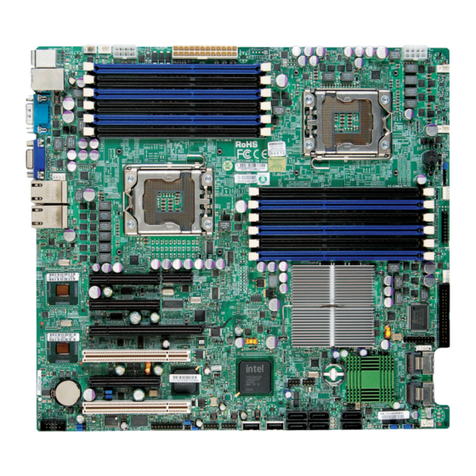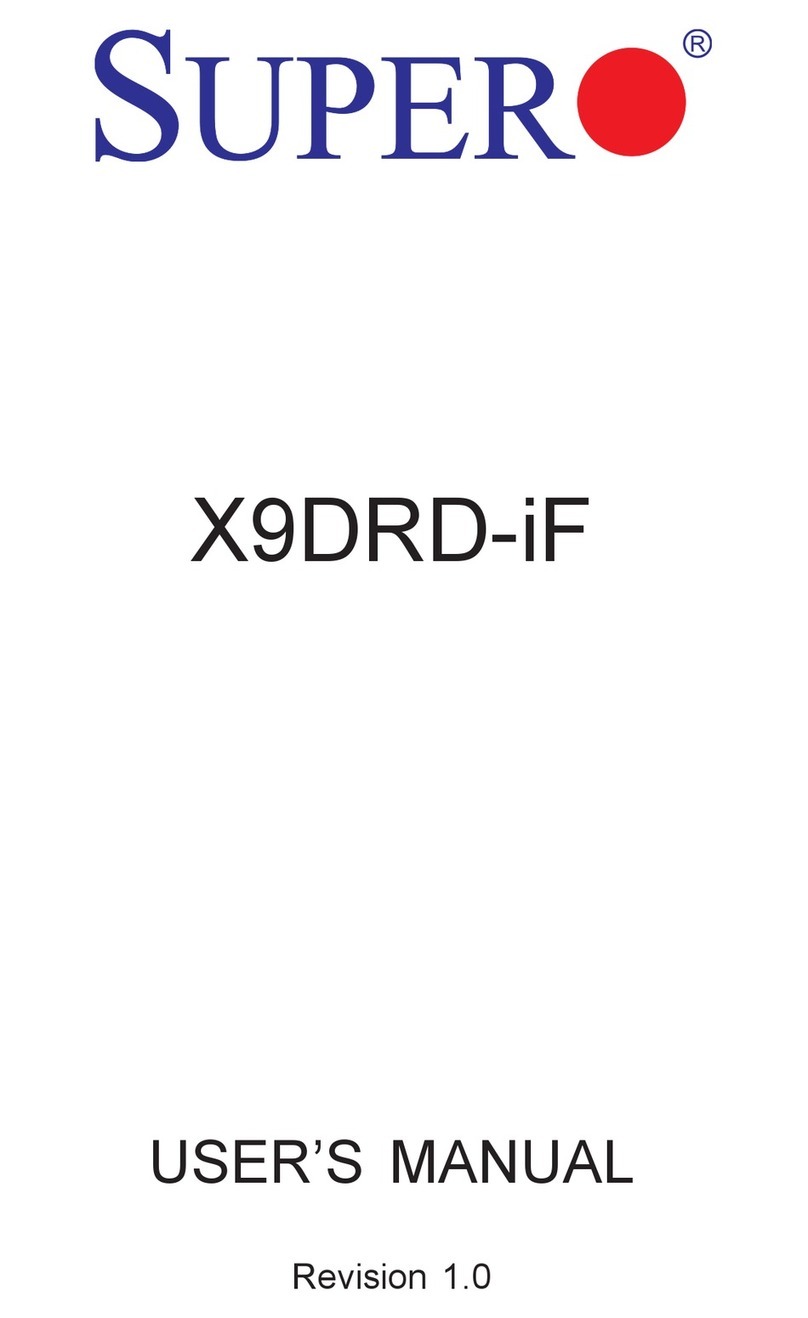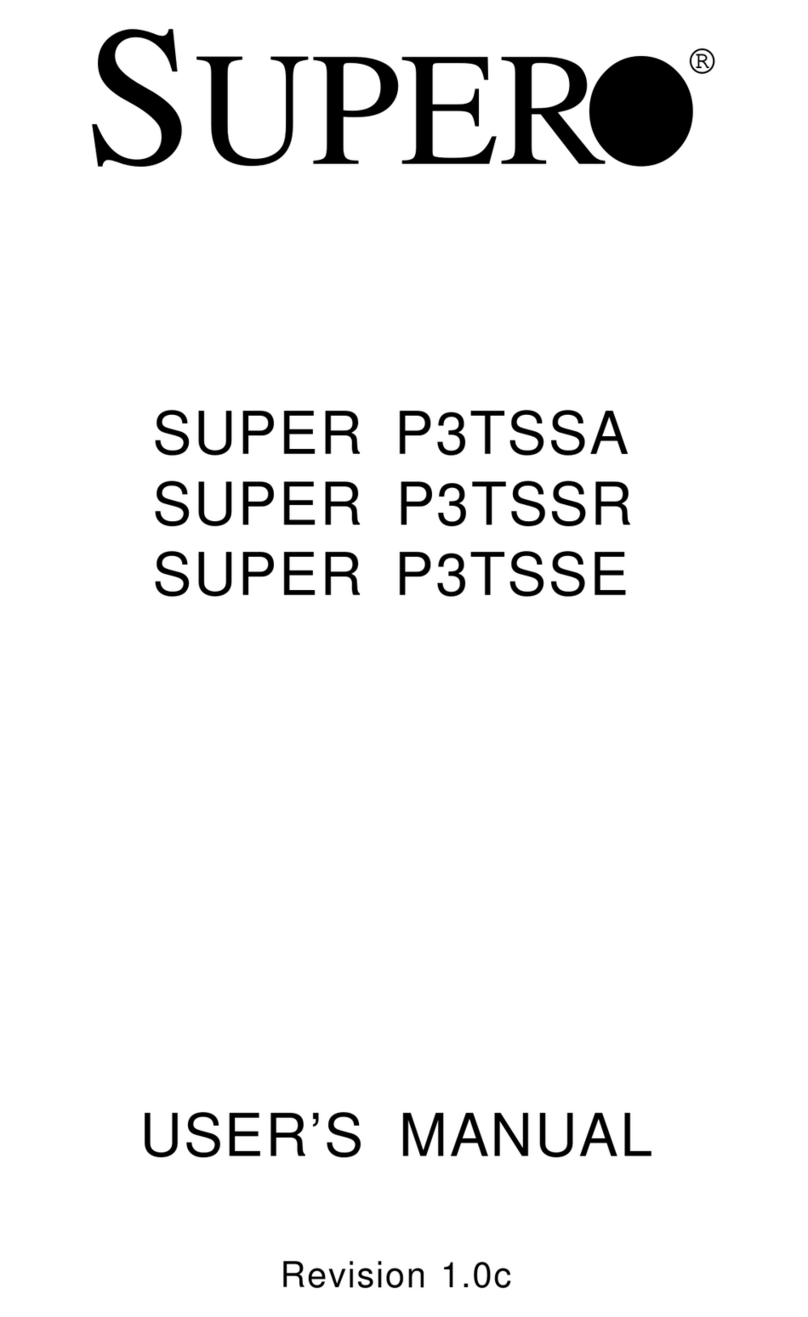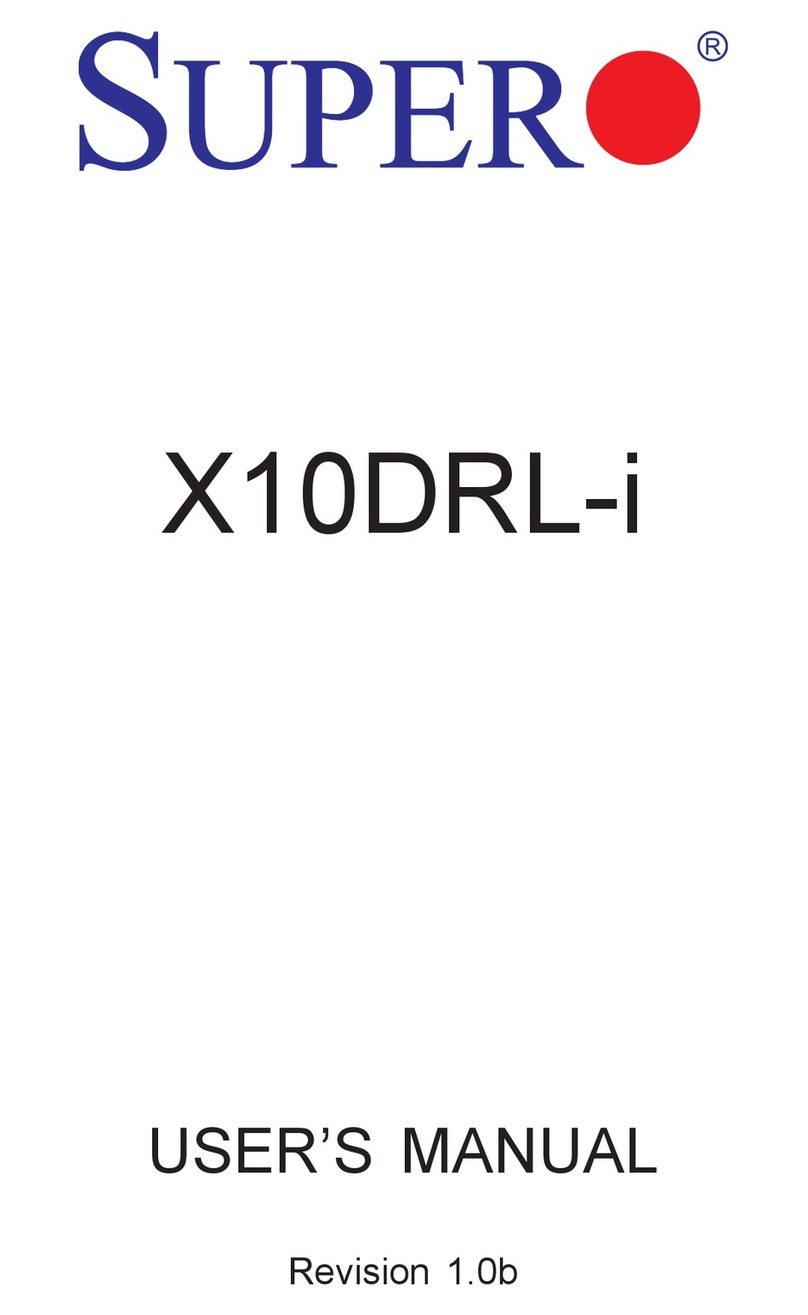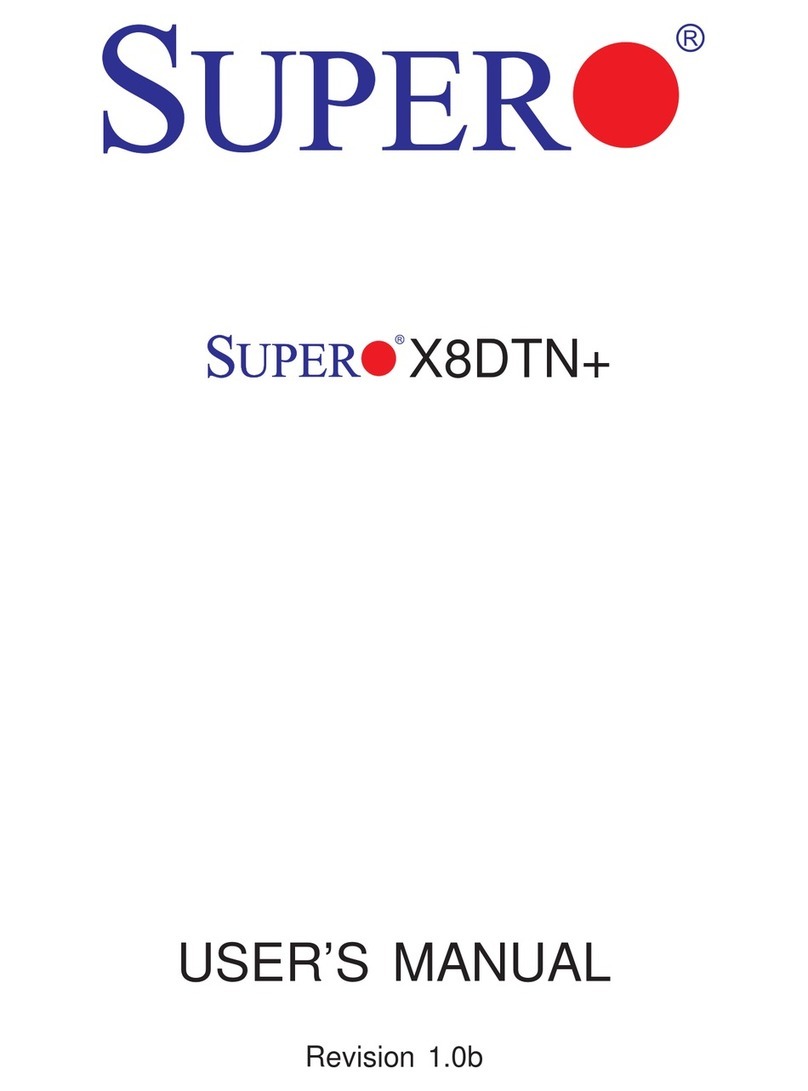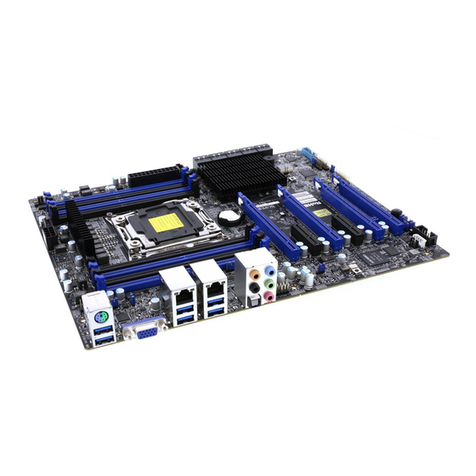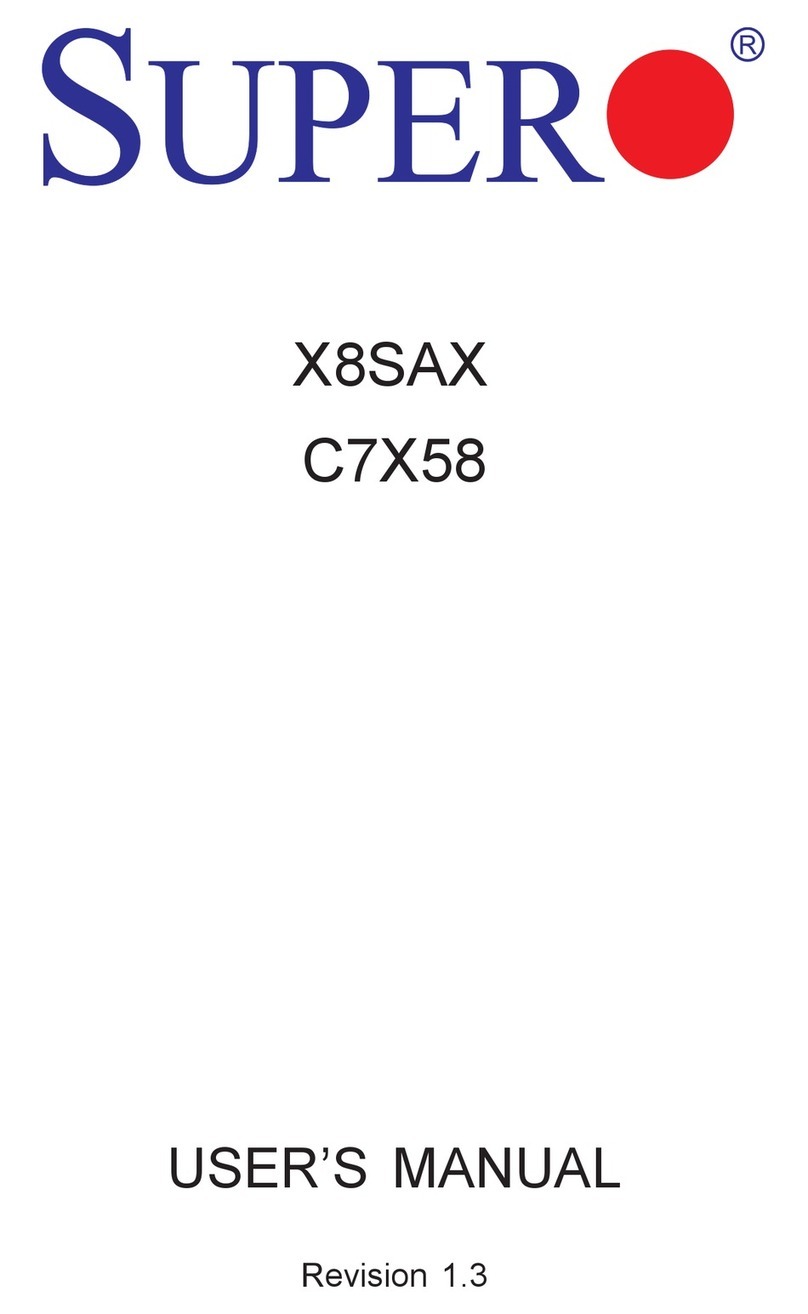SUPER P6SWA/P6SWD Manual
Universal Serial Bus ................................................................................ 2-8
Serial Ports ............................................................................................... 2-8
Wake-On-LAN........................................................................................... 2-8
Fan Headers ............................................................................................. 2-8
CD Headers .............................................................................................. 2-9
Overheat LED ............................................................................................ 2-9
Chassis Intrusion ...................................................................................... 2-9
2-7 Jumper Settings............................................................................................ 2-10
Explanation of Jumpers ........................................................................ 2-10
Changing the CPU Speed..................................................................... 2-10
CPU Safe Mode ..................................................................................... 2-10
CMOS Clear............................................................................................. 2-11
AC'97 Enable/Disable............................................................................. 2-11
Keyboard Wake-Up................................................................................. 2-11
2-8 Parallel Port, AMR, Floppy and Hard Disk Drive Connections ............. 2-12
Parallel Port Connector......................................................................... 2-13
Floppy Header ........................................................................................ 2-13
IDE Interfaces......................................................................................... 2-13
AMR Connector ....................................................................................... 2-14
2-9 Installing Software Drivers .......................................................................... 2-15
Chapter 3: Troubleshooting
3-1 Troubleshooting Procedures ......................................................................... 3-1
Before Power On...................................................................................... 3-1
No Power................................................................................................... 3-1
No Video.................................................................................................... 3-1
Memory Errors.......................................................................................... 3-2
Losing the System’s Setup Configuration ............................................ 3-2
3-2 Technical Support Procedures ..................................................................... 3-2
3-3 Frequently Asked Questions......................................................................... 3-3
3-4 Returning Merchandise for Service ............................................................. 3-6
Chapter 4: BIOS
4-1 Introduction....................................................................................................... 4-1
4-2 BIOS Features ................................................................................................. 4-2
4-3 Running Setup ................................................................................................. 4-2
Standard CMOS Setup............................................................................. 4-4
Advanced CMOS Setup ........................................................................... 4-5
Advanced Chipset Setup ......................................................................... 4-9
vi

